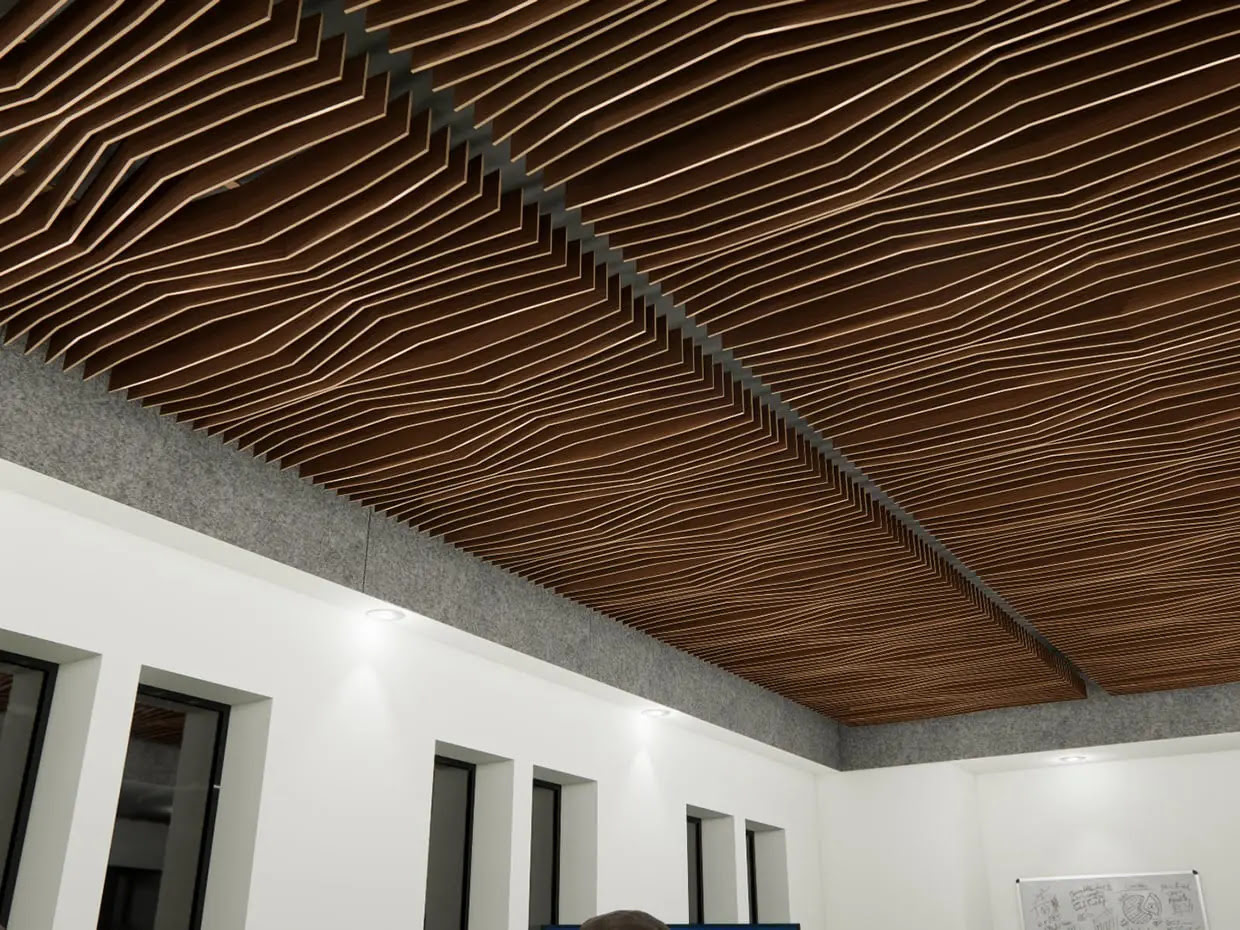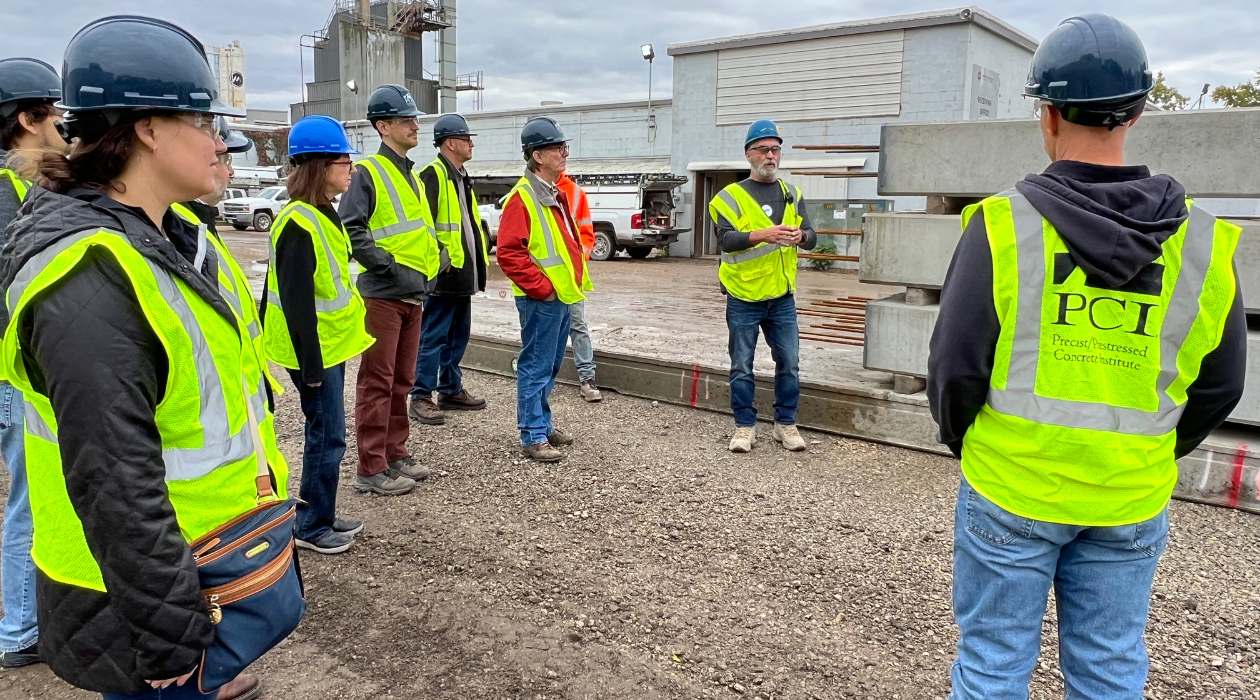Home>diy>Building & Construction>What Is An Allowance In Construction


Building & Construction
What Is An Allowance In Construction
Modified: December 7, 2023
Learn what an allowance in building construction means and how it impacts your project. Understand its purpose and significance to ensure a successful construction process.
(Many of the links in this article redirect to a specific reviewed product. Your purchase of these products through affiliate links helps to generate commission for Storables.com, at no extra cost. Learn more)
Introduction
Welcome to the world of construction, where every project starts with a vision and transforms into a solid structure. Construction projects involve numerous decisions, calculations, and adjustments to ensure the final result meets the desired specifications. One essential aspect of any construction project is the concept of allowances.
Allowances in construction refer to a predetermined amount of money set aside within the project budget for specific items that are not yet defined in detail. These allowances cover various aspects such as materials, finishes, fixtures, or equipment. They provide flexibility and enable project owners, architects, and contractors to make choices and selections as the project progresses.
In this article, we will explore the definition of allowances in construction, their importance in the construction process, various types of allowances, how to determine their amount, the impact they have on construction projects, best practices for handling allowances, and potential challenges and pitfalls that may arise.
Key Takeaways:
- Allowances in construction provide flexibility, mitigate uncertainty, and enhance customization. They enable informed decision-making, control over budgets, and collaboration among stakeholders, ultimately contributing to successful project outcomes.
- Effective management of allowances is crucial for navigating potential challenges such as budget variations, miscommunication, and scope creep. Clear communication, proactive updates, and collaboration with stakeholders are essential for ensuring smooth construction processes.
Definition of Allowance in Construction
In the realm of construction, an allowance refers to a specific amount of money allocated within the project budget to cover certain items or components that have not been fully specified at the time of budgeting or contract agreement. These items could include materials, finishes, fixtures, appliances, or any other elements that require further decision-making or customization.
Allowances are generally included in the project budget to accommodate the inevitable uncertainties that arise during the construction process. They provide a degree of flexibility, allowing the project owner, architect, or contractor to make selections or upgrades as the project progresses.
It is important to emphasize that allowances should not be confused with contingencies. While allowances are intended to cover specific items within the project scope, contingencies are additional funds reserved for unforeseen circumstances or changes in the project.
By incorporating allowances into the construction budget, stakeholders have the opportunity to make informed decisions at a later stage when more details or preferences become clear. This flexibility is particularly beneficial in cases where specific selections or changes are influenced by factors such as design revisions, availability of materials, changes in technology, or unforeseen challenges encountered during the construction process.
Allowances allow for the incorporation of personalized choices, while still maintaining control over the overall project budget. They provide the opportunity to customize and enhance the final outcome, ensuring that the constructed space aligns with the vision and requirements of the project owner.
It is worth noting that the inclusion of allowances in a construction project requires effective communication and collaboration among all stakeholders. Open dialogue and proactive decision-making help to ensure that the allowances are used efficiently and reflect the desired goals of the project.
Importance of Allowances in Construction
Allowances play a crucial role in the construction industry by providing flexibility and accommodating changes that may arise during the course of a project. They offer several important benefits that contribute to the successful completion of a construction project:
1. Flexibility and Adaptability: Construction projects often involve a multitude of decisions, and these decisions may change as the project progresses. Allowances allow for adjustments and modifications, enabling stakeholders to make informed choices based on evolving needs, preferences, or unforeseen circumstances. This flexibility ensures that the final product meets the desired vision and requirements.
2. Mitigating Uncertainty: Construction projects are inherently complex, and it is not always possible to have all the details and specifications defined at the outset. Allowances help to allocate funds for items that are not yet clearly defined, such as fixtures, finishes, or appliances. By setting aside a budgeted amount, project teams are prepared to make specific selections when necessary, reducing uncertainty and ensuring the smooth progression of the project.
3. Enhancing Customization: Allowances allow project owners to personalize their construction project by making choices or upgrades based on their preferences or changing needs. These allowances provide the opportunity to incorporate high-quality materials, upscale finishes, or innovative technologies that align with the desired aesthetic and functional goals.
4. Managing Budget Constraints: Construction projects typically operate within budget constraints. Allowances assist in managing and controlling costs by providing a predefined budget for various items. Project teams can make informed decisions within the allocated allowance, ensuring that the overall project budget is effectively utilized.
5. Facilitating Collaboration: The inclusion of allowances fosters collaboration among project stakeholders, including the project owner, architect, contractor, and subcontractors. By allowing for ongoing discussions and decision-making, allowances ensure that everyone is on the same page and working towards a common goal. This collaboration helps to establish realistic expectations, reduce potential conflicts, and ultimately contributes to the successful completion of the construction project.
In summary, allowances in construction projects serve as a vital tool to accommodate changes, mitigate uncertainty, enhance customization, manage budgets, and promote collaboration. Their inclusion in project budgets is essential for optimizing the overall construction process and delivering a final product that meets the vision and expectations of all stakeholders involved.
Types of Allowances in Construction
Allowances in construction projects can be categorized into various types based on the specific items they cover. Here are some common types of allowances:
1. Material Allowances: Material allowances are set aside in the project budget to account for materials that have not been fully specified at the time of budgeting. This could include items such as flooring, roofing, windows, doors, or any other material that requires further decision-making based on design choices or availability.
2. Fixture and Finish Allowances: Fixture and finish allowances are allocated funds for items such as light fixtures, plumbing fixtures, cabinetry, countertops, or any other finishing details that are yet to be determined. These allowances provide the flexibility to select the desired fixtures and finishes as the project progresses.
3. Appliance Allowances: Appliance allowances cover the cost of appliances that will be incorporated into the constructed space, such as refrigerators, stoves, dishwashers, or other kitchen and laundry appliances. These allowances allow for the inclusion of appliances that align with the owner’s preferences or specific requirements.
4. Allowances for Technology and Systems: In modern construction, technology plays a crucial role in various systems, such as HVAC (heating, ventilation, and air conditioning), lighting control, security, or audiovisual systems. Allowances for technology and systems enable the selection and installation of the most suitable and up-to-date solutions.
5. Change Order Allowances: Change order allowances provide an additional budget to accommodate modifications or changes requested by the owner or required due to unforeseen circumstances during the construction process. These allowances help to manage flexibility and adaptability when unexpected changes arise.
These are just a few examples of the different types of allowances commonly used in construction projects. The specific types and amounts of allowances can vary depending on the nature of the project, the level of detail at the time of budgeting, and the preferences of the project owner.
It is important to note that the selection process for items covered by allowances usually involves collaboration between the project owner, architect, and contractor. Clear communication and a well-defined decision-making process are necessary to ensure that the allowances are used effectively and that the final selections align with the project’s vision and requirements.
Determining the Amount of Allowances
Establishing the appropriate amount for allowances in a construction project requires careful consideration and analysis. The following factors play a key role in determining the amount of allowances:
1. Project Scope and Complexity: The size and complexity of the construction project are crucial factors in determining the amount of allowances. Larger projects or projects with intricate designs may require more allowances to account for the various decision points and potential changes that may arise.
2. Level of Detail at the Time of Budgeting: The level of detail available at the time of budgeting affects the amount of allowances. If the project is in the early stages and many details are not yet known, a higher allowance amount may be necessary to account for the uncertainties and variations that may occur during the construction process.
3. Owner’s Preferences and Expectations: The project owner’s preferences and expectations play a significant role in determining the amount of allowances. Owners who have specific design tastes or desire high-end finishes and materials may require larger allowances to accommodate their preferences.
4. Market Conditions and Availability: The availability and costs of materials, fixtures, appliances, and other construction components can fluctuate based on market conditions. Allowances need to take into account the prevailing market prices to ensure sufficient funds are available for the desired selections.
5. Historical Data and Industry Standards: Historical data from previous projects and industry standards can guide the determination of allowance amounts. Analyzing similar projects and their costs can provide insight into typical allowance figures for specific items or categories.
6. Contingency Allocation: It is common practice to allocate a portion of the project budget as a contingency to cover unexpected events or changes. The size of the contingency can influence the amount allocated to allowances, as a larger contingency may allow for smaller allowances, and vice versa.
7. Collaboration and Communication: Close collaboration and communication among the project owner, architect, and contractor are essential for determining the appropriate amount of allowances. Ensuring all stakeholders are aligned on the budget and the desired scope of the project helps to establish realistic allowances and avoid any misunderstandings or disputes.
By considering these factors, construction professionals can determine a reasonable and appropriate amount for allowances that allows for flexibility, customization, and efficient decision-making throughout the construction process.
It is worth noting that allowance amounts should be regularly reviewed and updated as the project progresses and more details become available. Adjustments may be necessary to align the allowances with the actual costs and to ensure that the project remains within budget.
An allowance in construction is a budgeted amount set aside for specific items not yet selected, such as fixtures or finishes. It’s important to carefully track and manage allowances to avoid cost overruns.
Impact of Allowances on Construction Projects
Allowances have a significant impact on construction projects, influencing various aspects and stakeholders involved. Understanding the impact of allowances can help project teams effectively manage the construction process and achieve successful outcomes. Here are some key ways in which allowances impact construction projects:
1. Flexibility in Decision-Making: Allowances provide project owners, architects, and contractors with the flexibility to make informed decisions during the construction process. As details evolve and preferences become clearer, allowances allow for adjustments and customization, ensuring that the final product aligns with the desired vision and requirements.
2. Adaptability to Changes: Construction projects often encounter unexpected changes or modifications due to design revisions, site conditions, fluctuating material availability, or client preferences. Allowances allow project teams to adapt to these changes without disrupting the project schedule or incurring additional costs. They provide the necessary buffer to accommodate alterations and ensure the project can proceed smoothly.
3. Collaboration and Communication: The inclusion of allowances promotes collaboration and communication among project stakeholders. It encourages ongoing dialogue and involvement, allowing for open and productive discussions regarding selections and upgrades covered by the allowances. This collaboration helps align everyone’s expectations, mitigates potential conflicts, and fosters a cohesive and successful project team.
4. Customization and Personalization: Allowances enable project owners to personalize their construction projects according to their specific preferences and requirements. They have the freedom to select finishes, fixtures, and materials that reflect their desired aesthetic and functional goals. This customization enhances the satisfaction and overall satisfaction with the completed project.
5. Control over Budgets: Implementing allowances helps project teams effectively manage budgets. By allocating specific amounts for different items, they can closely monitor and control costs within the allocated allowances. This control allows for better financial planning and ensures that the project remains on track financially.
6. Avoiding Design Delays: Allowances assist in avoiding design delays by providing a defined budget for items that are not yet fully specified. While waiting for detailed specifications, project teams can proceed with preliminary selections based on the allocated allowances. This approach keeps the project moving forward while allowing time for the necessary design decisions to be made.
7. Enhancing Client Satisfaction: Allowing for customization and providing flexibility in decision-making through allowances contributes to higher client satisfaction. Clients feel more involved and valued when they have the opportunity to make selections that suit their preferences. This satisfaction can lead to positive referrals and repeat business for construction professionals.
In summary, allowances have a significant impact on construction projects, providing flexibility, adaptability, customization, and control over budgets. They foster collaboration and communication, enhance client satisfaction, and contribute to the successful completion of construction projects.
Best Practices for Handling Allowances in Construction
Effectively handling allowances in construction projects is crucial for ensuring smooth decision-making, cost control, and client satisfaction. The following best practices can help project teams navigate the process of managing allowances:
1. Establish Clear Communication: From the beginning of the project, establish clear lines of communication among all stakeholders involved, including the project owner, architect, contractor, and subcontractors. Define the expectations, scope, and purpose of the allowances, and ensure that everyone understands their roles and responsibilities in the decision-making process.
2. Involve Stakeholders Early: Involve key stakeholders in the selection process as early as possible. Engage the project owner, architect, and contractor in discussions to determine the desired aesthetic, functional requirements, and any specific preferences. Early involvement helps set appropriate allowance amounts and reduces the need for costly changes later in the project.
3. Research and Define Allowance Parameters: Conduct thorough research and analysis to define realistic allowance amounts for different categories such as materials, fixtures, appliances, and finishes. Consider market conditions, historical data, project scope, and the owner’s expectations. Clearly define the parameters and limitations of each allowance to avoid confusion or misunderstandings.
4. Regularly Update Allowance Amounts: As the project progresses and more information becomes available, regularly review and update the allowance amounts. Adjust the allowances as needed to reflect any changes in scope, design, or pricing. By staying proactive, you can ensure that the allowances remain accurate and aligned with the evolving project requirements.
5. Document Decision-Making Process: Maintain a detailed record of the decision-making process for each allowance. Document the options considered, the reasoning behind the final selection, and any related communication or agreements. A well-documented process provides transparency, minimizes disputes, and serves as a reference for future discussions or clarifications.
6. Monitor and Track Allowance Spending: Regularly monitor and track the expenses related to allowances. Maintain a clear record of how the allocated allowances are being utilized and ensure that expenditures remain within the specified limits. This helps to identify any potential budget overruns and allows for timely adjustments to stay on track financially.
7. Collaborate with Suppliers and Vendors: Establish strong relationships with suppliers and vendors involved in providing materials, fixtures, appliances, or other items covered by allowances. Engage them early in the project to ensure availability, obtain accurate pricing, and stay informed about any changes that may impact the allowance amounts or selections.
8. Seek Professional Advice if Needed: If you encounter challenges or uncertainty in managing allowances, do not hesitate to seek professional advice. Consultants or industry experts can provide valuable insights, guidance, or alternate perspectives to help navigate complex decisions or circumstances.
By following these best practices, construction professionals can handle allowances effectively, promote collaboration, control costs, and ultimately deliver successful construction projects that meet or exceed the expectations of the owner.
Potential Challenges and Pitfalls of Allowances
While allowances in construction projects offer flexibility and adaptability, they can also present some challenges and pitfalls that need to be addressed and managed effectively. Understanding these potential challenges can help project teams mitigate their impact and ensure a smooth construction process. Here are some common challenges and pitfalls associated with allowances:
1. Uncertainty and Budget Variations: One of the main challenges of allowances is the inherent uncertainty they introduce into the project budget. Allowances are estimated amounts that may not accurately reflect the actual costs of the items covered. This uncertainty can lead to budget variations and potential cost overruns if allowances are not carefully monitored and adjusted as needed.
2. Miscommunication and Unrealistic Expectations: Clear communication is crucial to avoid miscommunication and unrealistic expectations with allowances. Lack of clarity or inadequate communication regarding the scope of the allowances, selection processes, or limitations can lead to misunderstandings and conflicts between project stakeholders. It is important to establish open and transparent communication channels to prevent such issues.
3. Limitations and Restrictions: The use of allowances may come with limitations and restrictions, such as maximum amounts or limitations on the types of items that can be selected. These limitations can sometimes be perceived as constraints by the project owner, who may have specific preferences that fall outside the boundaries of the allowances. These limitations need to be clearly communicated and managed to ensure alignment and avoid dissatisfaction.
4. Decision Fatigue and Time Constraints: The selection process for items covered by allowances can be time-consuming and overwhelming. Project owners may experience decision fatigue with multiple choices to evaluate, leading to delays and potentially compromising the project schedule. Effective project management and clear decision-making processes can help alleviate these challenges and keep the project on track.
5. Price Fluctuations and Availability: Allowances are set based on estimated prices at the time of budgeting. However, market conditions, availability of materials, and unforeseen events can cause price fluctuations and affect the availability of certain items. This can impact the feasibility of staying within the allocated allowances and may require adjustments and alternative solutions to stay on budget.
6. Scope Creep and Change Requests: Allowances can inadvertently contribute to scope creep or frequent change requests. As project stakeholders have the flexibility to make selections, there is a possibility of ongoing changes or additions beyond the original scope. This can impact the project timeline, increase costs, and create challenges in managing the construction process effectively.
7. Inadequate Documentation: Insufficient documentation of the decision-making process related to allowances can lead to disputes or disagreements later on. It is important to maintain a clear record of the selections made, changes requested, and any agreements or approvals related to the allowances. This documentation will serve as a reference point and help resolve any potential conflicts or misunderstandings.
To address these challenges, effective project management, proactive communication, regular monitoring of allowances, and tracking expenditures are crucial. Close collaboration among project stakeholders and clear documentation of the decision-making process will help navigate these potential pitfalls and ensure a successful construction project.
Conclusion
Allowances play a vital role in the construction industry, providing flexibility, adaptability, and customization within the construction process. They allow project owners, architects, and contractors to make informed decisions, accommodate changes, and deliver a final product that aligns with the desired vision and requirements.
Throughout this article, we have explored the definition of allowances in construction, their importance, different types of allowances, how to determine their amount, and the impact they have on construction projects. We have also discussed best practices for handling allowances and highlighted potential challenges and pitfalls that may arise.
By effectively managing allowances, project teams can navigate potential challenges such as uncertainty, miscommunication, and limitations. Clear communication, regular updates, collaboration with stakeholders, and effective documentation are essential in ensuring successful outcomes and client satisfaction.
Allowances enable construction professionals to adapt to changes, enhance customization, control budgets, and foster collaboration. They provide the necessary flexibility for project owners to personalize their construction projects while staying within the allocated budget.
It is important to note that allowances should be regularly reviewed, adjusted as necessary, and communicated transparently among project stakeholders. By proactively managing allowances, construction professionals can minimize budget variations, mitigate potential conflicts, and ensure the smooth progression of the construction project.
In conclusion, allowances are an integral part of the construction process, offering valuable benefits such as flexibility, adaptability, and customization. When handled effectively, allowances contribute to the successful completion of construction projects that meet or exceed the expectations of all stakeholders involved.
Frequently Asked Questions about What Is An Allowance In Construction
Was this page helpful?
At Storables.com, we guarantee accurate and reliable information. Our content, validated by Expert Board Contributors, is crafted following stringent Editorial Policies. We're committed to providing you with well-researched, expert-backed insights for all your informational needs.















0 thoughts on “What Is An Allowance In Construction”